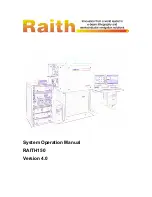21
21
21
HARMONY BACKGROUND AND TIPS
21
Chapter overview
By now you’ve likely browsed through the harmony
presets in VoiceWorksPlus and are relatively familiar
with the harmony modes and features. This chapter
gives some background and tips to help you produce
the best harmony performances possible using
VoiceWorksPlus. Editing your settings is discussed in
the following chapter.
Why are there different harmony
modes?
For every note you sing, there are many notes that
could qualify as good sounding harmony notes. In order
to have VoiceWorksPlus “sing the right notes” you
need to feed it some information and this is done
through creating several harmony “modes”. Each
harmony mode requires different input from you and is
capable of producing unique harmonies from the same
vocal performance. We will use a little allegory to
explain.
When you and a fellow musician get together to play
and sing, typically some musical information is passed
from one to the other before commencing the song.
You do this in order to make sure the music sounds
pleasant and not discordant.The information can be as
simple as the name of a song you both know, a musical
key or even pointing out the chords on your
instrument. In this respect, VoiceWorksPlus is similar.
You will need to share some musical information in
order for it to do its job properly.The different ways in
which you can communicate this information to
VoiceWorksPlus are through the “harmony modes”.
Like your friend in our analogy, VoiceWorksPlus has
intelligence that can contribute to making good music.
You can choose to use this intelligence or not
depending on the chord structure of your song and the
harmony lines you have in mind.You make this choice
when choosing presets to produce harmony in your
song.
The factory presets are organized on the basis of the
five harmony modes:
Chords
Notes
Scale
Shift
Combi
The “intelligent” harmony modes,
Scale
and
Chords,
calculate an input note to output note harmony “map”
with the following inputs from you:
1.The note you’re singing at any given moment;
2.The key and scale you’ve set at the beginning of
your song for Scale mode;
3. or the chord root and type interpreted by
VoiceWorksPlus from your incoming MIDI in
Chords mode.
This map has an output note associated with every
input note.This creates a harmony melody that moves
with your lead melody while generally sounding
harmonically correct with your accompaniment.
The non-intelligent modes,
Notes
and
Shift,
each
have unique requirements so we will deal with them
individually:
The
Notes
harmony mode requires a MIDI keyboard
or other MIDI source to dictate to VoiceWorksPlus
what harmony notes you’d like to hear during your
lead melody. Once a harmony note or notes are held
down on your MIDI keyboard or MIDI track, this is
where they will stay regardless of your changing vocal
melody.
Shift
mode follows the pitch of the lead melody a fixed
interval away. This is most useful for unison doubling,
octaves, special effects or Gothic-sounding 5ths. As
such, it’s not as useful for creating what we call
harmony which is usually made up of diatonic intervals
or those that vary their distance away from the sung
note depending on which note you are singing in a
scale.
See the following page for a comparison chart of the
harmony modes.
Summary of Contents for VoiceWorksPlus
Page 1: ......
Page 2: ......
Page 3: ......
Page 20: ...16 ...
Page 24: ...20 ...
Page 30: ...26 ...
Page 40: ...36 ...
Page 42: ...38 ...
Page 46: ...42 42 42 42 42 42 42 42 42 42 42 42 ...
Page 48: ...44 44 44 44 44 44 44 44 44 44 44 44 SIGNAL FLOW DIAGRAM VoiceWorksPlus Signal Flow ...


















